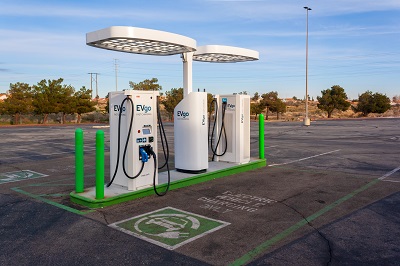
Electric vehicle (EV) charging infrastructure will grow exponentially in the coming months and years, a supplier said in a recent trends insight report.
Juice Technology AG makes electric charging stations and software for electric vehicles. As the government targets 50% market share for EV sales by 2030, Lars Thomsen, a futurologist at Juice Technology, noted the areas needing to align.
Beyond charging stations which work alongside gas stations, Thomsen said consumers will need convenient and reliable at-home options. A major force in adoption, Thomsen said, will be mobile and stationary wall boxes that can be portable for recreational travel.
“In addition, hotels and restaurants will upgrade their infrastructure to accommodate EV charging,” Thomsen’s report stated, “equipping up to 10% of their parking spaces with AC stations for traveling guests. This will entail approximately a half million chargers over the next two years.”
Other categories include inventory growth, competitive pricing and expanded fleet markets.
“With these trends in play, the U.S. EV market will be poised for expansion, particularly as electric trucks, fleets and flexible charging options materialize,” Thomsen said. “Given the dramatic scope of the EV transition goals, particularly for U.S. consumers, the public and private sector must make a 110% effort to ensure EVs are affordable and doable for the average family or commercial business.”
The report’s category detail includes:
· Inventory. The global supply chain shortage made it difficult to give an EV a test drive. That will begin to change by mid-2022 as more players begin to enter the market with new options. The menu of choices will enable a jump to more than 15% EV share in the U.S. next year.
· Pricing Competition. To get to a 50% sales share, auto manufacturers will need to produce a range of price point models. Over the next several years, consumer EV selection will have to be greatly expanded beyond glamour models like Tesla to meet a variety of transportation needs.
· Fleet Market Expansion. Commercial expansion will be driven by similar factors: more inventory and model options and wide availability of public charging stations and onsite/portable chargers. Amazon will fleet up to 100,000 Rivian e-vans in the next two years in addition to other EV models. The United States Postal Service fleet will be largely electrified over the next three to four years comprising 260,000 vehicles. Charging convenience will be a factor in servicing all of these commercial and municipal service vehicles.




